If your hydrangea is wilting, drooping, or the leaves are turning yellow or brown, it is likely overwatered. Hydrangeas are susceptible to root rot and other diseases if they are overwatered. There are several signs that your plant is overwatered, and luckily, there are also ways to fix the problem.
What Are the Signs of Overwatered Hydrangeas?
If you think you may have overwatered your hydrangea, there are a few key signs to look for. The leaves may also be yellow or brown, and they may fall off the plant easily. The stems of the plant may be soft or mushy, and the plant may have a generally unhealthy appearance. The leaves of the plant will be wilted and drooping, even if the soil is moist. If you see any of these signs, it’s important to take action to save your plant.
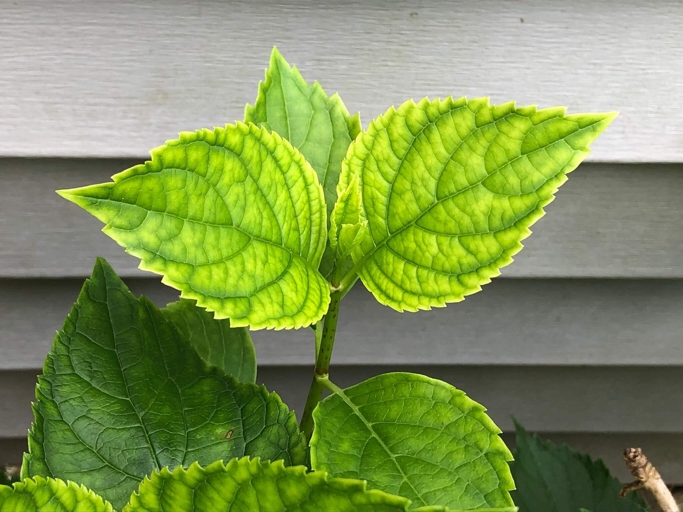
If the roots of the plant are damaged, they may need to be trimmed. You may also need to repot the plant in fresh, dry soil. Allow the soil to dry out completely between waterings, and make sure the plant is getting plenty of drainage. With proper care, your overwatered hydrangea should recover and thrive. To fix an overwatered hydrangea, start by watering it less frequently.
Root Rot
The roots of the plant become waterlogged and begin to rot, which can lead to a number of problems for the plant. Root rot is a serious problem for hydration that can occur when the plant is overwatered. In severe cases, root rot can kill the plant. Root rot can cause the leaves of the plant to turn yellow and fall off, the stem to become weak and the plant to become less vigorous.
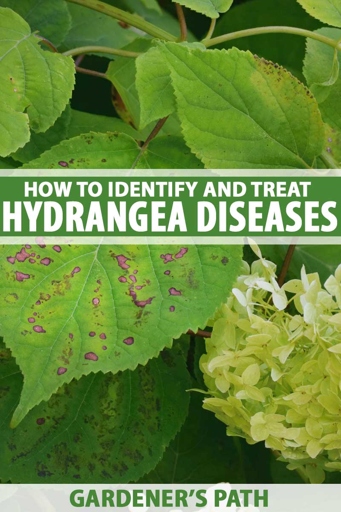
The first step is to stop watering the plant and allow the soil to dry out. If you suspect that your plant has root rot, it is important to take action immediately. Once the soil is dry, you can then remove any affected roots and replant the plant in fresh, well-draining soil. If the root rot is severe, you may need to replace the entire plant.
Browning and Wilting of Leaves
When leaves brown, it’s a sign that they’re getting too much water. When leaves wilt, it’s a sign that they’re not getting enough water. If you notice your hydrangea’s leaves are wilting or browning, it’s likely a sign of overwatering.

If the soil is dry, it’s a sign that there’s not enough water. If the soil is soggy or wet, it’s a sign that there’s too much water. If you think your hydrangea is overwatered, the first step is to check the soil.
The next step is to adjust your watering schedule. If you’re not watering often enough, increase the frequency. If you’re watering too often, cut back on the frequency.
If you’re still having trouble, consider getting a soil moisture meter. This will help you determine how much water your plant needs.
Overwatered plants can be saved, but it’s important to act quickly. With a little care, you can get your hydrangea back on track.
Yellowing of Leaves
One of the most common problems with hydrangeas is yellowing leaves. This can be caused by a number of factors, including overwatering, nutrient deficiency, or pests.
If the soil is too wet, the roots will suffocate and the plant will begin to yellow. If you suspect your hydrangea is being overwatered, the first step is to check the soil. It should be moist, but not soggy.
If the problem persists, you may need to amend the soil with more drainage. To fix an overwatering problem, you will need to let the soil dry out completely before watering again.

If the leaves are still yellowing, you may need to add a soil amendment such as compost or manure. Nutrient deficiency is another common cause of yellowing leaves. Hydrangeas need a lot of nutrients to thrive, so be sure to fertilize regularly.
Finally, pests can also cause yellowing leaves. If you see pests on your plant, you will need to treat them with an insecticide. Aphids, scale, and mites are all common pests that can damage hydrangeas.
Dropping of Leaves
One of the most common reasons is overwatering. As the temperatures cool and the days grow shorter, deciduous trees begin their annual process of dropping leaves. While this is a natural occurrence, there are a few things that can cause leaves to drop prematurely.
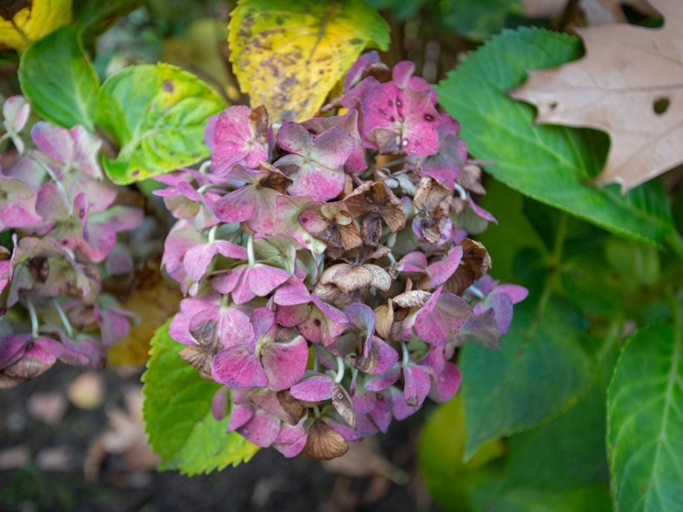
When roots are constantly saturated with water, they begin to suffocate and can no longer absorb the nutrients they need from the soil. This stress causes the tree to shed its leaves in an effort to conserve energy.
If the soil is waterlogged, you’ll need to improve drainage by aerating the soil and/or adding more organic matter. You may also need to adjust your watering schedule. It should be moist, but not soggy. If you suspect your tree is being overwatered, the first step is to check the soil.
While dropping leaves is a natural part of the fall season, it can be a sign of distress in your tree. By paying attention to the signs and taking action to correct the problem, you can help your tree thrive for years to come.
Stunted Growth
This can lead to stunted growth, yellowing leaves, and other problems. Stunted growth is a common problem with overwatered plants. When a plant is overwatered, the roots are unable to take in enough oxygen and the plant cannot properly absorb nutrients.

To fix an overwatered plant, start by watering it less often. Be sure to water the plant only when the soil is dry to the touch. If the plant is still not doing well, you may need to repot it in dryer, well-drained soil. Allow the soil to dry out completely between waterings.
Presence of Molds
While molds are often found in damp, humid environments, they can also grow in dry, warm conditions. Molds are a type of fungi that can grow on many different surfaces, including plants. Molds can also produce toxins that can be harmful to humans and animals. Molds can cause a variety of problems for plants, including leaf spot, root rot, and stem blight.
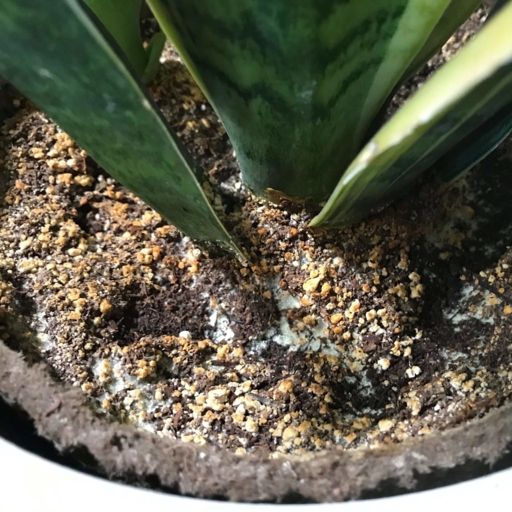
Remove any affected leaves or stems from the plant and dispose of them in a plastic bag. Thoroughly clean the affected area with a solution of water and bleach. Be sure to wear gloves and a mask when handling moldy materials. If you suspect that your plant has a mold problem, it is important to take action immediately. If the problem is widespread, you may need to treat the plant with a fungicide.
How to Save Overwatered Hydrangea?
Although it may seem like a lost cause, there are some things you can do to save your plant. With a little care and attention, your overwatered hydrangea can be back to its old self in no time. If you have an overwatered hydrangea, don’t despair.
This can be a serious problem, as it can lead to root rot. If the roots are affected, you’ll need to take action quickly to save your plant. One of the first things you need to do is assess the damage. If the leaves are wilted and the stems are drooping, it’s likely that the roots are waterlogged.
The first step is to stop watering your plant. This may seem counterintuitive, but overwatering is the biggest problem facing hydrangeas. Once you’ve stopped watering, allow the soil to dry out completely. This will give the roots a chance to recover.
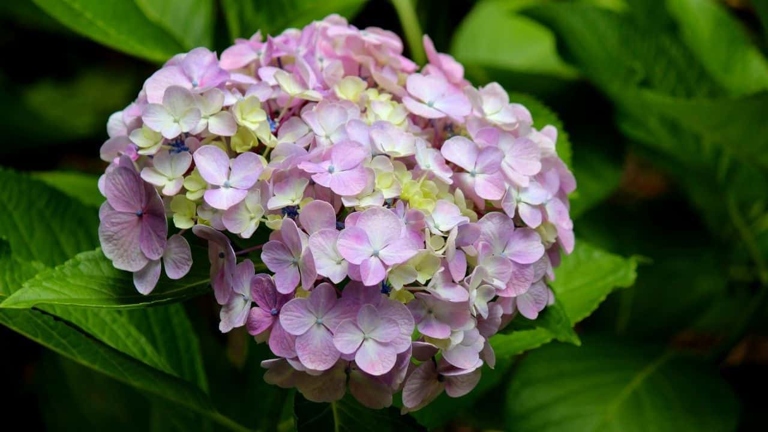
Once the soil is dry, you can start watering your plant again. But be careful not to overdo it. And when you do water, make sure to water deeply. This will help to encourage deep, healthy roots. Water your plant only when the soil is dry to the touch.
With a little care and attention, your overwatered hydrangea can be back to its old self in no time.
Repot the Plant
The first step is to check the soil to see if it’s moist. If you notice that your hydrangea’s leaves are wilting or drooping, it’s a sign that the plant is overwatered. If it is, then it’s time to repot the plant.
To repot, choose a pot that’s slightly larger than the current one and has drainage holes. Add fresh, well-draining potting mix to the new pot. Water the plant thoroughly. Gently remove the plant from its current pot and loosen the roots before placing it in the new pot.
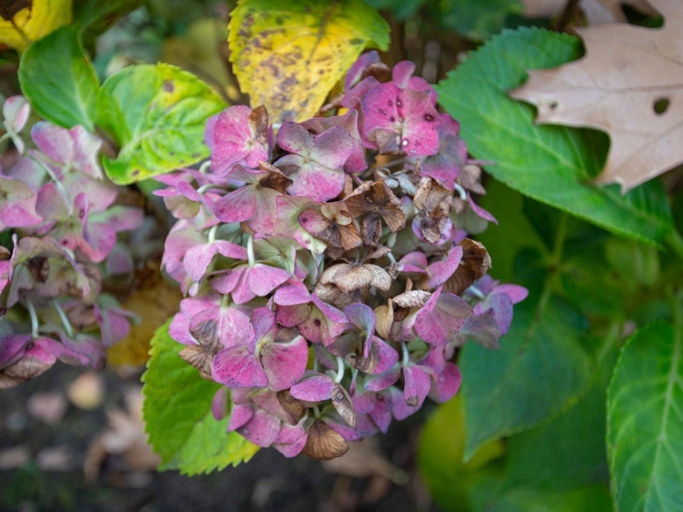
Add a layer of gravel or sand to the bottom of the pot, then add fresh potting mix. If you don’t want to repot, you can try to improve the drainage of the current pot. Water the plant thoroughly and make sure to drainage holes are not blocked.
Relocate the Plant
The plant may also start to produce fewer flowers. If you catch the problem early, you can try relocating the plant to a spot with better drainage. If the plant is already wilted, you can try to revive it by giving it a deep watering. If you’re overwatering your hydrangea, you may see the leaves start to yellow and wilt. Then, make sure to water it less frequently.
Remove Damaged Leaves
You can also remove any affected branches. To remove damaged leaves, simply cut them off at the stem. If you notice that your hydrangea’s leaves are wilting, discolored, or otherwise damaged, it’s important to remove them as soon as possible. This will help your plant to focus its energy on healthy growth.
Treat the Soil with Fungicide
This will help to prevent the spread of the disease and keep your plant healthy. Make sure to follow the directions on the package, and be sure to apply it evenly to the soil. There are a few things to keep in mind when using fungicide, however. When it comes to overwatered hydrangeas, one of the best things you can do is treat the soil with fungicide. You’ll also want to make sure to water the plant deeply after applying the fungicide, as this will help to wash it down to the roots.
How to Water Hydrangea
If your hydrangea is wilting, has yellow leaves, or its stems are soft, it’s likely that it’s overwatered. Here are a few signs that your plant is overwatered:
Wilting leaves: If the leaves on your hydrangea are wilting or drooping, it’s a sign that the plant is not getting enough water. 1.
Yellow leaves: Yellow leaves can indicate that the plant is getting too much water. 2.
Soft stems: If the stems of your plant are soft, it’s a sign that the plant is overwatered. 3.
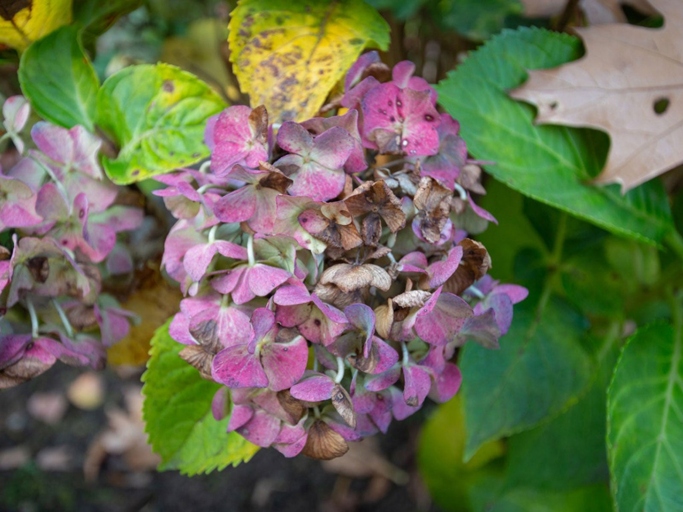
To fix an overwatered plant, you’ll need to water it less frequently. Allow the soil to dry out completely between watering, and be sure to drainage holes in the pot.
Water in the Morning
If it is, give the plant a deep watering, making sure the water penetrates the root zone. If you’re noticing that your hydrangea’s leaves are wilting or that the plant isn’t blooming as usual, it may be a sign that you’re overwatering it. If they don’t, you may need to adjust your watering schedule. Then, wait a few days to see if the plant’s leaves perk up. When watering your hydrangea, be sure to check the soil first to see if it’s dry.
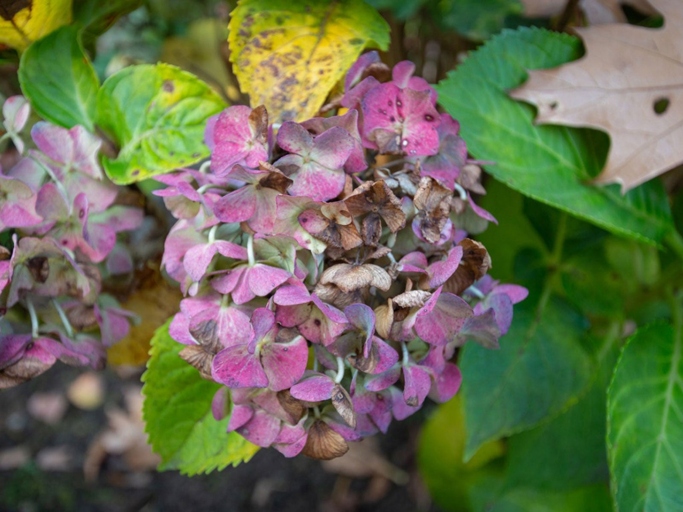
If this is the case, you’ll need to repot the plant in a pot with better drainage. First, check the drainage of the pot or area where the plant is growing. If the drainage is poor, water may not be able to penetrate the root zone, causing the plant to become waterlogged. If you think you may be overwatering your hydrangea, there are a few things you can do to fix the problem. You may also need to adjust your watering schedule, watering only when the soil is dry.
Water at Least Three Times a Week
overwatering is a common problem for gardeners, but it’s easy to fix. With a little less water, your hydrangea will soon be looking healthy and beautiful again. Simply water your hydrangea less often, and make sure that the soil has a chance to dry out between watering. If you’re noticing that your hydrangea’s leaves are wilting, or that the blooms are drooping, it’s likely that you’re overwatering your plant. You should also check the drainage of your pot or garden bed, and make sure that water is not pooling around the roots of your plant.
Water When the Soil Is Dry
If you’ve ever had a wilted, yellowing plant, you know the feeling of a plant dying from too little water. But did you know that it’s possible to overwater a plant as well? Here’s what to look for and how to fix an overwatered plant. Overwatered plants can show similar symptoms to plants that are underwatered, but the solution is very different.
The first step is to check the soil to see if it is dry. If the soil is dry, water the plant. When the soil is dry, it means that the plant is not getting enough water.
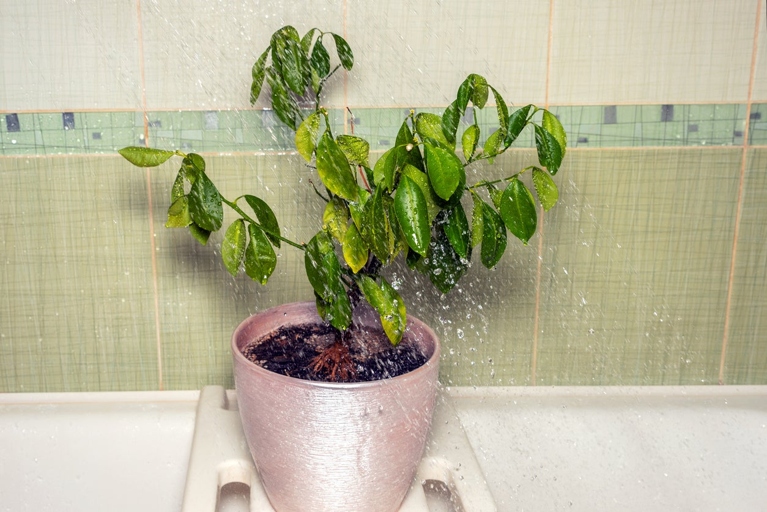
If the soil is not dry, the plant may be overwatered. If the soil is soggy or feels wet, the plant is overwatered. Overwatered plants can show signs of wilting, yellowing, and leaf drop. If you think your plant may be overwatered, check the soil.
To fix an overwatered plant, stop watering it and let the soil dry out. Once the soil is dry, resume watering the plant.
Do Not Water the Leaves and the Flowers
If you’re noticing that your hydrangea’s leaves are wilting or that the flowers are drooping, it’s likely that you’re overwatering the plant. When overwatering, the roots of the plant are unable to get the oxygen they need, which can lead to root rot. While hydrangeas need a lot of water to thrive, too much water can actually be harmful.

With a little TLC, your hydrangea should be back to its healthy self in no time! Then, water the plant deeply, but less frequently. Be sure to check the soil regularly to ensure that it’s not too dry or too wet. To fix an overwatered hydrangea, start by allowing the soil to dry out completely.
Water All the Way Around the Pot
If you’re noticing that your hydrangea’s leaves are wilting or that the plant is generally looking unhealthy, it’s possible that you’re overwatering it. overwatering is a common problem among gardeners, but it’s easy to fix once you know the signs to look for.
To start, make sure that you’re watering your hydrangea at the base of the plant, not from above. Water should be able to drain freely from the pot, so be sure to empty any water that’s collected in the saucer beneath the pot.

If you think you may be overwatering your plant, the best solution is to let the soil dry out completely before watering again. This will give the roots a chance to breathe and will help prevent further damage to the plant.
When to Water After Transplanting Hydrangea?
When to water after transplanting hydrangea?
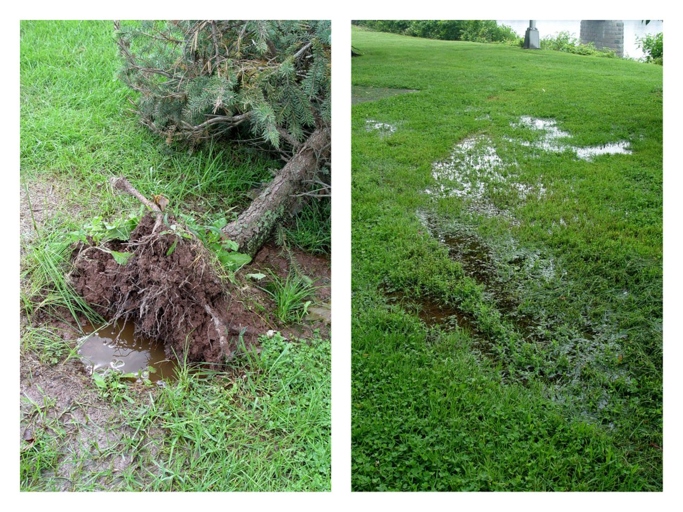
Water it deeply and evenly, about once a week, for the first few months. Keep an eye on the soil, though, and water it more often if it starts to dry out. Once it’s established, you can water it less frequently. If you’ve just transplanted your hydrangea, you’ll need to water it regularly to help it establish itself in its new location.
Water Immediately After Transplanting
This will help the plant to recover from the stress of being transplanted and will also help it to establish itself in its new location. When you transplant a hydrangea, it is important to water it immediately. Once the soil is dry, you can start watering the plant again. If you do, the leaves may turn yellow and the plant may start to wilt. If this happens, you should stop watering the plant and allow the soil to dry out. However, you should be careful not to overwater the plant.
Water Religiously
If you’re a gardener, you know that too much of a good thing can be a bad thing. While it’s important to give your plants the water they need to thrive, overwatering can lead to a number of problems. The same is true for watering your plants.

If you suspect your plant is overwatered, there are a few signs to look for. You may also see mold or mildew on the leaves or stem. The leaves may be wilted or yellow, and the stem may be soft or mushy.
If you think your plant is overwatered, the first step is to stop watering it. Then, check the soil to see if it’s dry. If it is, give the plant a deep watering, and then let the soil dry out completely before watering again.
If you’re not sure whether your plant is overwatered or underwatered, it’s always best to err on the side of caution and give it a little less water than you think it needs. With a little care, you can keep your plants healthy and hydrated.
Common Mistakes in Watering Hydrangea
These are all signs that you’re giving your hydrangea too much water. If you’re overwatering your hydrangea, the leaves will start to yellow and wilt. The flowers will also start to droop and the plant will look overall unhealthy.

To fix an overwatered hydrangea, start by cutting back on watering. If the roots are waterlogged, they may need to be trimmed back. You may also need to repot the plant in a well-draining potting mix. Allow the soil to dry out completely between watering sessions.
Once you’ve corrected the watering issue, your hydrangea should start to recover. Be patient, as it may take a few weeks for the plant to fully bounce back. In the meantime, make sure to keep an eye on it and water only when necessary.
Watering During the Night
If you think you may have overwatered your plants, try to water them less frequently and see if there’s any improvement. If you’re noticing that your hydrangea’s leaves are wilting or turning brown, it’s likely that you’re overwatering them. If you water them at night, the leaves will stay wet and are more susceptible to fungal diseases. When watering your hydrangeas, make sure to do so in the morning so that the leaves have time to dry before nightfall.
Watering Without Consistent Schedule
If you’re watering your hydrangea without a consistent schedule, you may be overwatering it. Here are some signs that you’re overwatering your hydrangea, and how to fix the problem.

If the leaves are wilting, it means that they’re not getting enough oxygen. This is a sign of stress and means that the plant isn’t getting the nutrients it needs. Another sign of overwatering is if the leaves are turning yellow. One sign that you’re overwatering your hydrangea is if the leaves are wilting.
This will give the plant a chance to absorb the water it needs without being waterlogged. If you think you’re overwatering your hydrangea, the best thing to do is to let the soil dry out completely between watering. This will help to prevent the leaves from getting too wet. You should also make sure that you’re watering at the base of the plant, rather than from above.
Watering Even During Wet Seasons
Should you still water your plants then? If you’re like most gardeners, you probably water your plants when they’re dry. But what about during wet seasons?
Even during wet seasons, your plants still need to be watered. Here are a few reasons why: The answer is yes!
The rain can actually evaporate pretty quickly, leaving your plants thirsty. 1. Just because it rains a lot doesn’t mean that the ground is always wet. Wet seasons can actually be pretty dry.
Wet seasons can also be pretty windy. This can cause the water in the ground to evaporate even faster. 2.
They need water to grow properly. Your plants are still growing during wet seasons. 3.
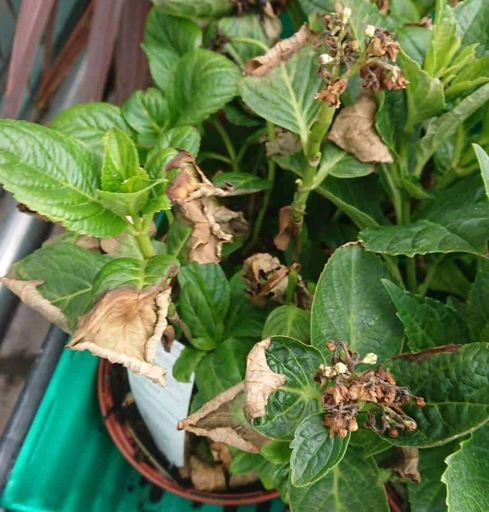
So, even during wet seasons, make sure to water your plants regularly. They’ll thank you for it!
Watering Without Checking the Soil Moisture
These are all signs that your plant is not getting the water it needs. If you overwater your hydrangea, you may see the leaves start to yellow and wilt. The flowers may also droop and the plant may look overall unhealthy.

Stick your finger into the soil and see how wet it is. If the soil is still moist, then you don’t need to water the plant. If you think you have overwatered your hydrangea, the first thing you should do is check the soil moisture. If the soil is dry, then you will need to water the plant.
Water the plant until the soil is moist, but not soggy. Be sure to check the soil moisture regularly so that you don’t overwater the plant again. When watering your hydrangea, make sure to water the soil, not the leaves.
Watering the Leaves and the Flowers
The flowers may be brown or have brown spots. The leaves may be wilted, yellow, or drooping. If you’re wondering whether you’ve overwatered your hydrangea, there are a few signs to look for. The plant may be overall stunted in growth.

If the plant is still not looking its best, you may need to repot it in fresh, dry soil. Once the soil is dry, you can water the plant as usual. If you think you’ve overwatered your hydrangea, the best course of action is to let the soil dry out completely.
Watering Without Good Drainage
If you’re watering your hydrangea without good drainage, you’re likely to see signs of overwatering, such as wilting leaves, yellowing leaves, and fungal growth. To fix the problem, you’ll need to improve drainage by adding organic matter to the soil, installing a drainage system, or both.
Watering When Water Isn’t What It Needs
But did you know that overwatering is one of the leading causes of plant death? If you’re like most gardeners, you probably water your plants when they look like they need it.
When you overwater your plants, the roots are suffocated and can’t get the oxygen they need to survive. The leaves may turn yellow and the plant may start to droop, but by then it’s often too late.
If you think your plant is overwatered, the best thing to do is to let it dry out for a few days. If the leaves are still yellow and the plant is still drooping, you can try to rescue it by replanting it in fresh, dry soil.
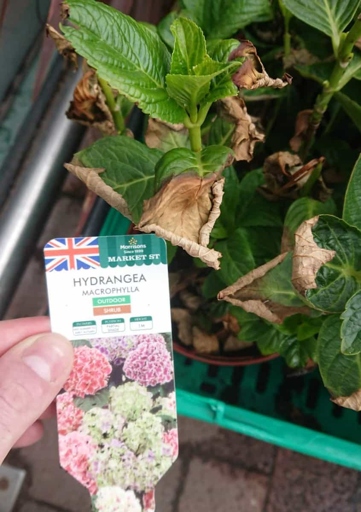
If you’re not sure whether your plant is overwatered or not, the best thing to do is to err on the side of caution and water less often. Your plants will thank you for it!
How Long Will Your Hydrangea Last?
But how long do they last? Hydrangeas are a beautiful, flowering plant that can add a touch of elegance to any home or garden.
Unfortunately, hydrangeas have a relatively short lifespan. Most only bloom for a few weeks to a few months before their flowers start to wilt and die.
First, make sure you plant it in a well-draining spot. There are a few things you can do to help your hydrangea last longer. Overwatered hydrangeas are more likely to wilt and die quickly.
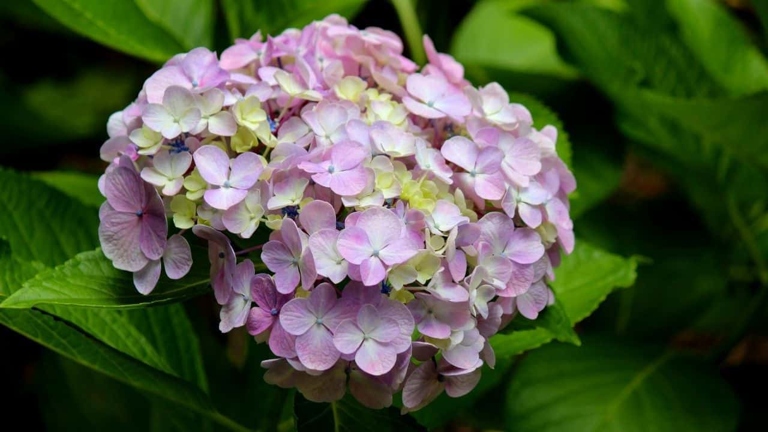
Second, deadhead the flowers regularly. This will encourage the plant to produce new blooms.
Finally, give your hydrangea plenty of sunlight. 6-8 hours of sunlight per day is ideal.
With proper care, your hydrangea should last for a few months. Enjoy its beautiful blooms while they last!
Frequently Asked Questions
1. What are the signs of overwatering a hydrangea?
The leaves of an overwatered hydrangea will be wilted and droopy, and the plant will generally look unhealthy. The soil around the plant will also be very wet and soggy.
2. What are the consequences of overwatering a hydrangea?
Overwatering a hydrangea can lead to root rot, which can kill the plant.
3. How can I tell if my hydrangea is being overwatered?
The best way to tell if your hydrangea is being overwatered is to check the soil around the plant. If the soil is very wet and soggy, then your plant is probably being overwatered.
4. What should I do if I think my hydrangea is being overwatered?
If you think your hydrangea is being overwatered, the best thing to do is to stop watering it and let the soil around the plant dry out. Once the soil is dry, you can start watering the plant again, but be sure not to overwater it.
5. Is it possible to overwater a hydrangea?
Yes, it is possible to overwater a hydrangea. Overwatering can lead to root rot, which can kill the plant.
Final thoughts
If you believe your plant is overwatered, there are a few things you can do to try and save it. First, check the drainage and make sure the roots are not sitting in water. If they are, you can try repotting the plant with fresh, dry soil. If the plant is wilted, you can try giving it a deep watering to see if that helps. You can also try pruning the plant to help it dry out. If you see any mold or mildew, you will need to throw the plant out and start over.
